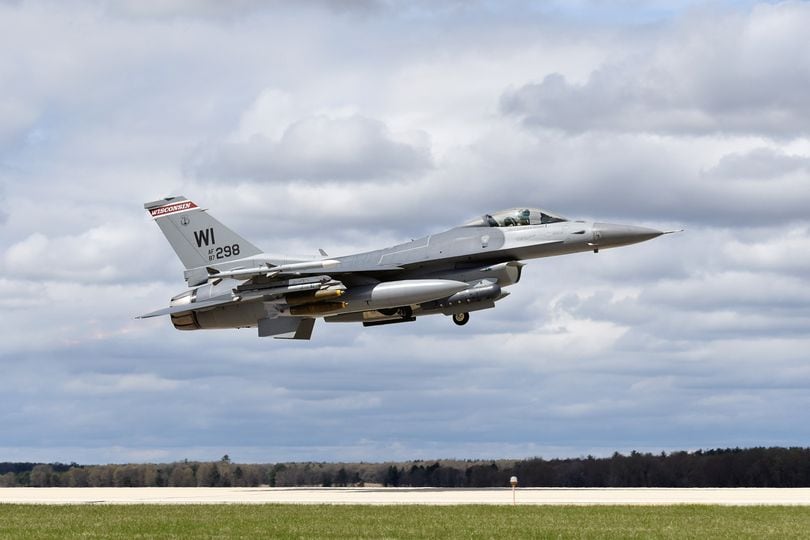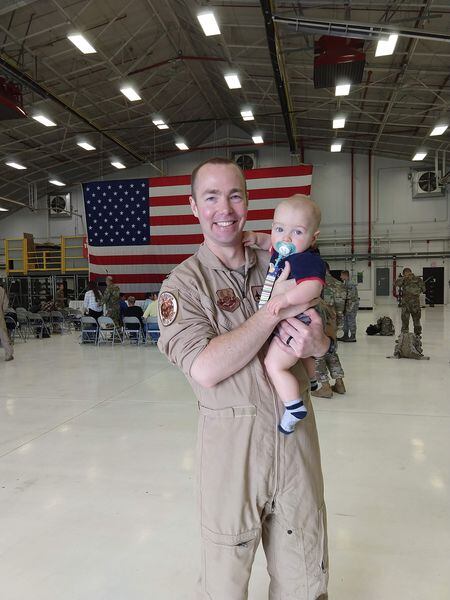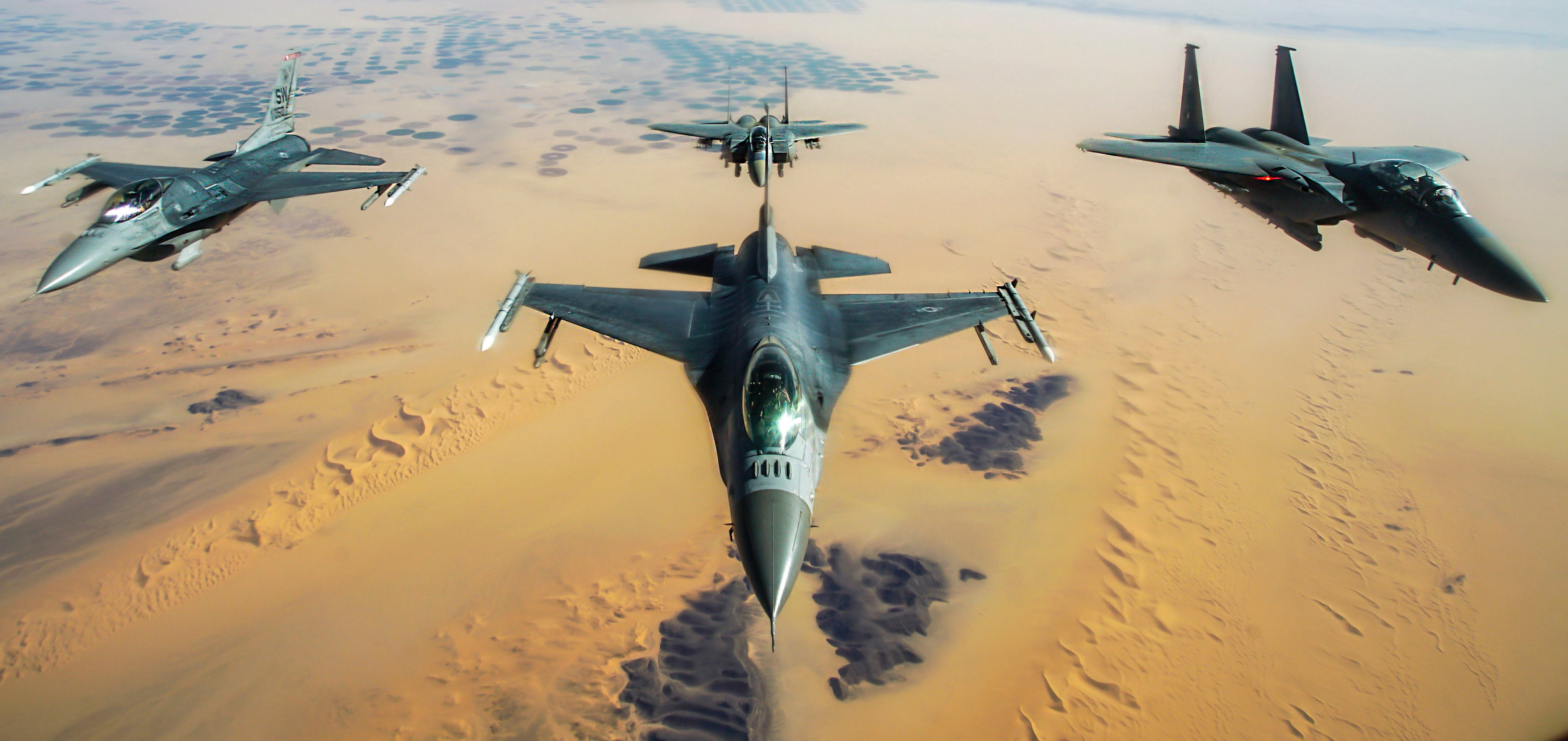The F-16C Fighting Falcon pilot who died in a crash in Michigan’s Upper Peninsula last December was disoriented and distracted before his plane pitched into the woods, safety investigators said in a new report out Wednesday.
Capt. Durwood “Hawk” Jones, 37, a fighter pilot with the Wisconsin Air National Guard’s 176th Fighter Squadron, went down in the Hiawatha National Forest while training to protect American airspace along the northern border around 7:15 p.m. on Dec. 8, 2020.
Investigators found the crash occurred because Jones lost his bearings in flight and could not spatially reorient himself after trying to right the plane when it lost GPS navigational data. Multiple other factors contributed to his death, including low light at night, weather conditions and the jet’s position and speed in the air.
Jones set out that evening from Truax Field, Wisconsin, alongside another aircraft to practice a scramble in case of a threat to U.S. airspace.
RELATED

He was a current and qualified F-16 pilot who had logged more than 1,300 hours flying rated aircraft and more than 1,000 hours in the F-16C — including more than 240 in combat and over 300 at night.
Ahead of the flight, ANG had deemed the mission that night as an “elevated risk” based on the maneuvers, environment and pilots, the report said. The weather was bad enough that the previously planned rendezvous with a Civil Air Patrol Cessna was deemed too dangerous for the small aircraft. It was particularly dark in the upper Midwest that night, and light reflected off of the Great Lakes could play tricks on the eyes.
Shortly after takeoff, Jones noticed his GPS wasn’t showing its satellite tracking data, and tried to troubleshoot the problem in midair.
The pilot instead relied on his inertial navigation system, the internal device that calculates aspects of a plane’s position in the sky like roll, pitch and velocity using gyroscopes and accelerometers rather than a satellite signal.
Jones’s Fighting Falcon swapped positions with his wingman before flying into clouds.
“Looks like I’m getting into the weather. … Are you able to keep track of me?” the wingman radioed to Jones, according to the report.
Then, Jones lost sight of the other plane.
“While the [mishap pilot] was still ‘blind,’ the distance between the [mishap pilot and wingman] increased to 5.0 nautical miles” on the air navigation system linking the two jets,” the report said. Disoriented, Jones “asked if the [wingman] was making a left-hand turn. The [wingman] responded, ‘I’m not quite yet, I was going to press a little further forward.”
As the other pilot was responding, Jones’s jet drew farther away from his wingman. “The last radio communication received from [Jones] was vague and non-specific,” the report said.
RELATED

Jones’s maneuvers, especially without GPS guidance, required him to rely on his eyesight to direct the plane without outside visual cues. That’s particularly difficult at night, in bad weather conditions and with little moonlight, the Air Force said.
“If visual contact with a horizon is lost, the vestibular system, or ‘seat of the pants’ feeling, becomes unreliable and can result in sensory illusions,” the safety investigation noted.
Jones and his F-16C “went into a series of heading, altitude and attitude changes” that “continued in a right-hand turn up to 135 degrees bank, a maximum dive angle of approximately 90 degrees nose low, and a maximum airspeed of over 600 knots,” investigators found.
It took only 12 seconds from his last radio call for Jones to end up nearly 10 miles away from his wingman. The plane was destroyed and its pilot killed when it crashed into the ground — possibly because of an illusion known as the “graveyard spiral.”
“At the time of impact, the [F-16C] was approximately 58 degrees nose low, with over 20 degrees of right bank, heading 205 degrees, and traveling over 600 knots,” the report said. “Analysis revealed the … nose and right wing tip both struck the ground, leaving recognizable cratering” and shearing off nearby trees.
Jones did not try to eject from the jet, the report said.
RELATED

Brig. Gen. David Smith, head of Jones’s accident investigation board, added that the pilot was distracted by focusing “a significant amount of attention on recovering a minor system degradation.”
“A pilot’s instrument flying priorities in the simplest of terms can be broken down to: aviate, navigate, and communicate, in that order,” Smith wrote. “The [pilot’s] fixation on a minor system degrade detracted from the primary task of … flying the [jet] ‘first’ using the remaining available primary instruments and/or the standby attitude indicator.”
Other Fighting Falcons, helicopters, an RC-26 reconnaissance plane, the Delta County Sheriff’s Department, Michigan State Police and the Coast Guard came together to rescue the downed pilot. Col. Bart Van Roo, the 115th Fighter Wing commander, declared Jones dead at the scene.
The Air Force’s safety review found no overdue inspections or incomplete maintenance that would have affected Jones’s flight that night. There was no indication of health issues or intoxication.
“A review of the [F-16C’s] active and historical maintenance records revealed two unscheduled maintenance events during the 90 days preceding the mishap,” including replacements of three coaxial connector and the embedded GPS, the report added. “There is no evidence to indicate they contributed to the mishap.”
Around 340 F-16s have been destroyed in mishaps since 1975, with at least 130 fatalities, according to the Air Force Safety Center. Eight of the jets suffered accidents in fiscal 2020, including four that were destroyed or severely damaged.
Rachel Cohen is the editor of Air Force Times. She joined the publication as its senior reporter in March 2021. Her work has appeared in the Washington Post, the Frederick News-Post (Md.), Air and Space Forces Magazine, Inside Defense, Inside Health Policy and elsewhere.




